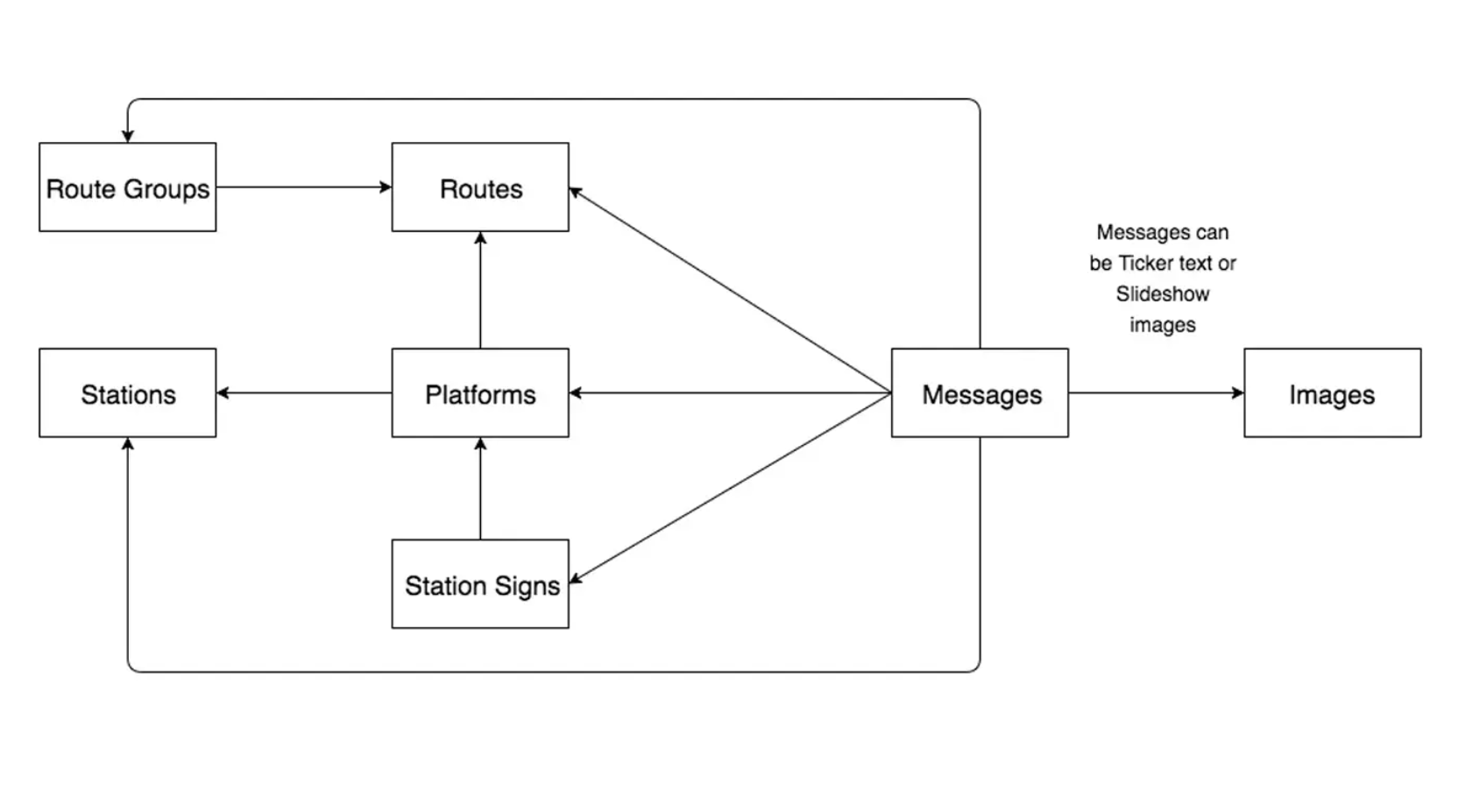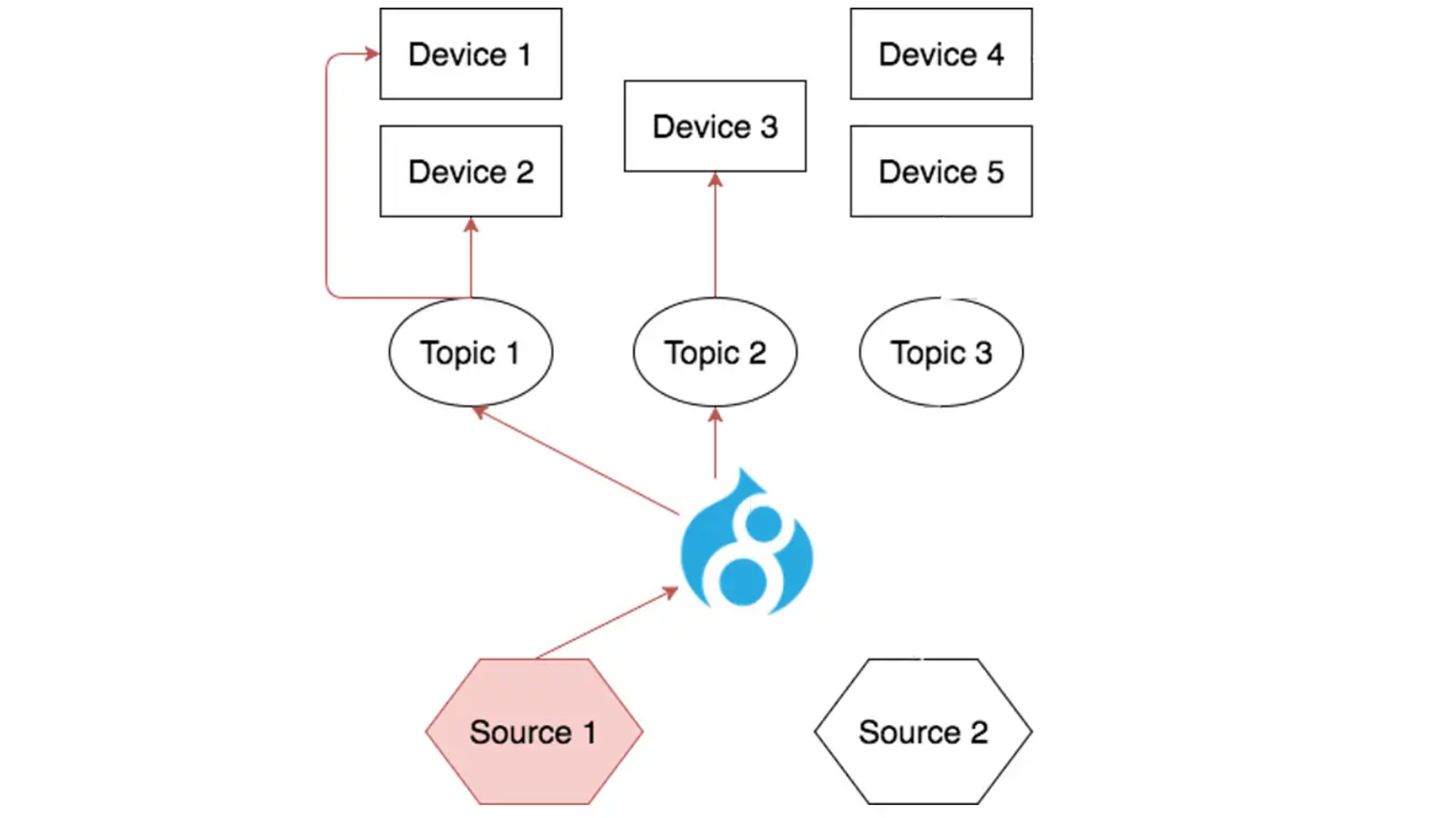Better transit service with real-time data
New York Metropolitan Transportation AuthorityWrangling a vast network of real-time transit data, we used Drupal 8 and the Internet of Things to modernize digital subway signage in New York City.
5.7 M
Riders using real time info every day
1800
New clocks added in 400 subway stations
3,000+
Unique digital signs connected with AWS Internet of Things
“CivicActions engineers were able to carry through complex technical requirements so that an entire city's worth of data could be captured, parsed, and displayed in a matter of a few seconds.”
Mike Madison, Senior Technical Architect, Acquia
The challenge
The Metropolitan Transit Authority (MTA) manages the world’s largest public transit system, helping over 11 million passengers get around New York City every day. The data universe is complex and constantly changing, representing a massive network of trains, tracks, and stations — which need to display reliably and in real time to keep riders informed. Acquia and CivicActions worked with MTA to extend the agency’s existing Drupal content management system (CMS) to a network of devices using Amazon’s Internet of Things (IoT). We helped MTA set the modern standard for using digital signage to communicate train arrival times, weather info, and service updates — making it easier for riders to plan their routes and get there on time.
Client goal
Riders rely on station signs and the MTA’s website for travel information to help them know when their train will arrive. To better inform riders in real time, MTA needed a way to display information from their website on digital signs in subway stations and platforms.
- Improve travel experience for subway riders by providing up-to-date info
- Empower MTA administrators to easily manage data on a familiar platform
- Provide real time data to help modernize public transportation
- Implement a flexible system to accommodate future growth
Expertise
- Technical Leadership Consulting
- Technical Architecture Development
- User Research
- Design Thinking and Application
- Interface Design
- Backend Development Expertise
- Design Implementation
- Content Modeling
- Responsive Design
Tools and technologies
- Decoupled Drupal 8
- React.js
- Amazon Internet of Things (IoT)
- PHPUnit / Jest (unit testing)
- Acquia Build and Launch Tool (BLT)
- MQTT Messaging Protocol
Our approach
To better serve their customers and set their employees up for success, the MTA needed a single administrative site that could manage a lot of data from a variety of external feeds. Drupal 8 was a natural choice for the CMS because it can seamlessly integrate data from all these sources.
Then we connected over 3,000 MTA digital screens as unique devices on a private and secure “Internet of Things” within Amazon Web Services — allowing Drupal to push location-specific data to each individual screen. Read a technical deep-dive on this work from our partner.
Decoupled approach for flexibility
The MTA needed to display data reliably regardless of the device or front-end design. We created a custom decoupled (headless) Drupal theme built in React.js to adapt to different screen sizes and mobile platforms. The decoupled backend continually evaluates and pushes data from a variety of web service APIs, while compensating for incomplete or outdated information, so users only see data that’s relevant to them.

Content modeling for data management
To help MTA staff manage the flow of data, we created a digital representation — a content model — of the routes, stations, platforms, tracks, and signs throughout the system. This helped us break large data sets into smaller, actionable components so the right information can be served up in the right context.

Open source for cost savings
By using open source technology instead of expensive proprietary software, we helped the MTA lower costs and avoid vendor lock-in. Open source software like Drupal also offers a more flexible web-publishing approach than complex legacy solutions. Additionally, an open source approach can help agencies ensure better web accessibility for the long term.

Key outcomes
Timely digital data
With over 3,000 unique digital signs connected to AWS Internet of Things, MTA helps customers see data that is timely and specific to their location and needs.
Easy administration
We developed a Drupal 8 content model to support the MTA’s administrative dashboard so even non-technical users can make changes themselves.
React-ing in real time
Using React allowed us to interpret incoming data, implement appropriate templates, and display relevant information throughout the system — no matter the screen or interface.
Simple workflows
The resilient “headless” approach allows MTA staff to use standard publishing workflows to manage data independently of the screens that are visible to end users.
Built-in resilience
A few seconds can make a big difference when navigating the world’s largest subway network. We made sure the system could compensate for internet lapses to keep data flowing in real time.
Room to grow
We simplified the front-end architecture to push data from a central location to a huge number of devices, so MTA can scale the system to accommodate signs for the entire network as it changes and grows.